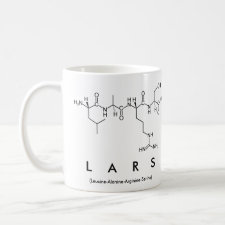
Authors: Schweitz L, Andersson LI, Nilsson S
Article Title: Molecularly imprinted CEC sorbents: investigations into polymer preparation and electrolyte composition.
Publication date: 2002
Journal: Analyst
Volume: 127
Issue: (1)
Page numbers: 22-28.
DOI: 10.1039/b105104k
Abstract: The influence of the sorbent preparation protocol and separation parameters on the selectivity and chromatographic efficiency of super-porous molecularly imprinted polymer (MIP) monoliths in capillary electrochromatography (CEC) was studied. Chiral templates were employed and enantiomer separation and resolution were used as measures of imprint selectivity and column efficiency, respectively the latter was in addition studied by chromatography of non-related aromatic structures. The polymer preparation was varied with respect to monomer composition in the pre-polymerisation mixture and also the use of single versus multiple template(s). The separation parameters investigated were type and content of organic solvent and surfactant modifier in the electrolyte. It was found that acetone and acetonitrile in buffer mixtures provided enantiomer separation of enantiomers of the template and also structural analogues; however. the degree of separation was greatly influenced by the content in the electrolyte. Three surfactants, sodium dodecylsulfate (SDS), cetyltrimethylammonium bromide (CTAB) and polyoxyethylene sorbitanmonolaurate (Tween 20), were examined as electrolyte modifiers. It was found that addition of SDS decreased and CTAB and Tween 20 increased the enantiomer separation. SDS and CTAB could be used up to 1 mM concentration whereas Tween could be used up to 90 mM concentration without causing baseline disturbances. The effects found and demonstrated strongly suggest that these parameters are to be considered during optimisation of an MIP-CEC system



Join the Society for Molecular Imprinting

New items RSS feed
Sign-up for e-mail updates:
Choose between receiving an occasional newsletter or more frequent e-mail alerts.
Click here to go to the sign-up page.
Is your name elemental or peptidic? Enter your name and find out by clicking either of the buttons below!
Other products you may like:
 MIPdatabase
MIPdatabase









